January 29
Travel day, so not too much to report. Up early for more monk shooting. Still don’t know what I’m doing.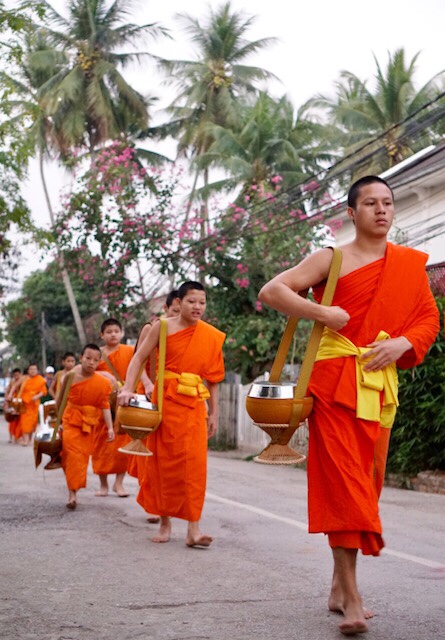
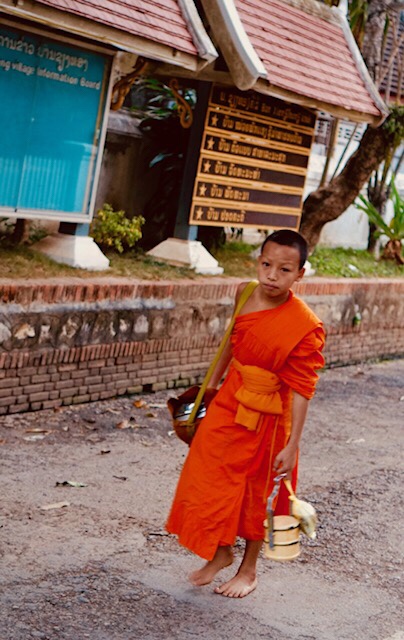

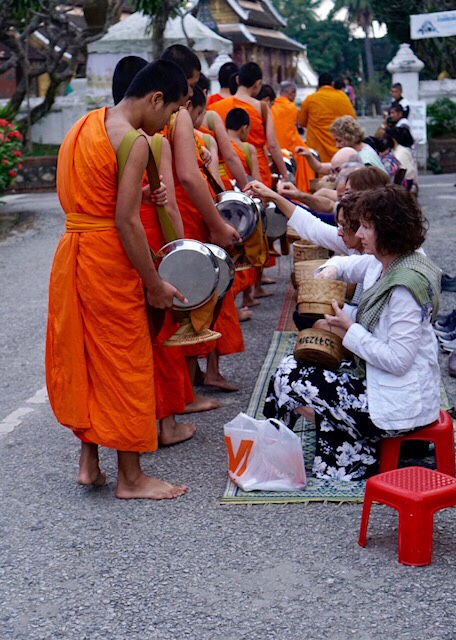

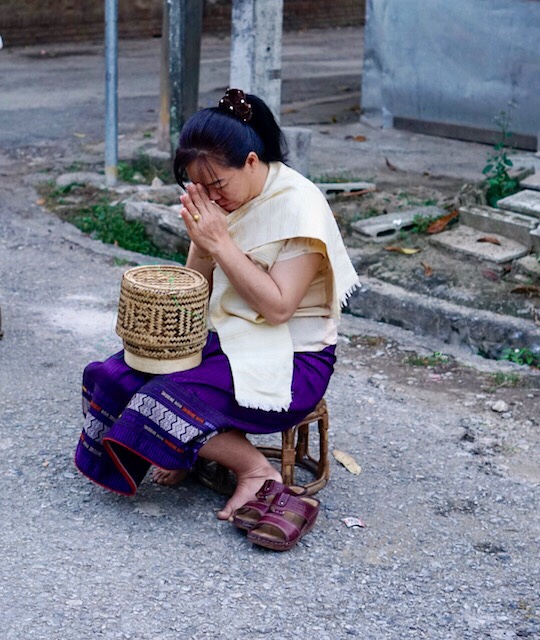
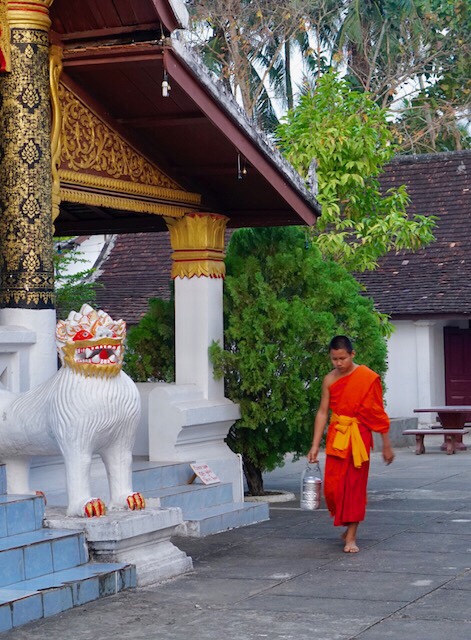
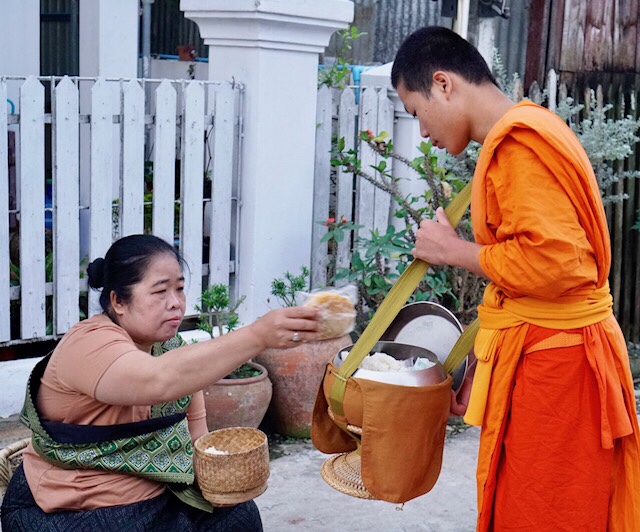
Drive to airport for flight to Bangkok, three hour layover, then on to Phnom Penh. A long day of travel. For the first time since our accident, I’m able to walk without difficulty.
We are staying at the FCC, the Foreign Correspondents Club, a historical building where journalists covering the Vietnam War and other as pets of Cambodia history and politics. It reeks of character and tradition. I’ll take some photos tomorrow. We have dinner on the second floor of the Club, with an overhead fan making the temperature comfortable. A very cool setting. Retire st a reasonable hour to prepare for a full day of markets and Cambodian history tomorrow.
Our friend and neighbor, Ed Bachrach, has been very actively engaged in charitable activities on Cambodia for over fifteen years. He kindly met with us to give us some background on Cambodia and made some suggestions that our tour guide, Karl Grobl, is incorporating into our itinerary.
If you are curious about what it means to really engage with a country, take a look at Ed’s website, www.buildcambodia.org. The historical information below is taken from reports Ed wrote on trips between 2002-04, so they are not current. Still, they provide a personal approach and style missing from other sources.
Ed described Cambodia back in 2002, when he first started going there, as a small nation of just over 10 million unfortunate souls situated between a prosperous Thailand of 61 million and a powerful Vietnam of 79 million. He says that back in 1968 Cambodia was a peaceful little kingdom trying hard to maintain her neutrality. She wanted to become the Switzerland of Southeast Asia.
The fabric of the Cambodian society caught its first snag when the United States began secret bombings in 1969 to destroy Vietnamese supply routes from North Vietnam supporting the assault on Saigon in the south. The king’s failure to respond to these bombings demonstrated his ineffectiveness and undermined his policy of neutrality. In 1970 the Cambodian military took over the country, ousted the king, and ruled corruptly and ineffectually for five years. The military regime of Lon Nol fought the communist Khmer Rouge movement, banishing them to the countryside where they gained sympathy from the peasantry and grew from a small band of rebels to a major insurgency. The relief that Cambodians anticipated when the popular Khmer Rouge liberated the people from the military regime quickly turned into the darkest hell imaginable. In three years from 1975 to 1979, two million Cambodians, a fourth of the population, perished from execution, torture, starvation and disease.
[Here is a bit more about the Khmer Rouge, from another source. In 1975 a horrific and tragic era of Cambodian history began in the reign of the Khmer Rouge. They were led by Pol Pot (or Saloth Sar) also known as ‘Brother Number One’. How many people were killed by Pol Pot and the Khmer Rouge is not known for certain but it was probably at least 1.5 million and it may have been as many as 3 million. Pol Pot declared that history would begin again in Cambodia. The first year of revolution was now the first year of history.
In 1975 Cambodia was a mainly agricultural country. Pol Pot decided it should be completely agricultural. This meant all the people from the towns and cities were forced to move to the countryside. Pol Pot also decided that agricultural output should double in 4 years (a totally unrealistic target). Private property was banned and collective farms were formed. They were supposed to grow 3 tonnes of rice per hectare (again a completely unrealistic target). People were made to work very long hours to try and grow the extra rice. They were given insufficient food and many fell ill and died from a combination of exhaustion and malnutrition.
That was not all. Religion was banned in Cambodia (people caught practicing Buddhism were executed). Family relationships were banned (on the grounds that parents exploited their children). Furthermore the smallest infringement of the rules resulted in execution. Although they were half starved people caught foraging for food were executed. People were also executed for being lazy. Needless to say anyone who complained was executed.
Furthermore the Khmer Rouge murdered intellectuals. Soon people who could speak a foreign language or who wore glasses were executed. This nightmarish situation was only ended by a war with Vietnam. The Vietnamese invaded Cambodia in December 1978 and quickly prevailed. Unfortunately Pol Pot escaped and he did not die until 1998.]
Cambodia was “liberated” again in 1978 when the Vietnamese invaded and drove the Khmers into the wilderness. The puppet regime installed by the Vietnamese fought a civil war with the Khmer Rouge for 14 years. In 1993 the United Nations attempted to conduct elections and resolve the conflict but the U. N.’s farce of an effort sowed more social disintegration and continued warfare.
Finally in 1998 those remaining in the Khmer Rouge were exhausted and began defecting to the government as credible elections were held. The fighting was over. Most Cambodians alive in 1998 had never known peace and so the slow process of reforming a society got its tentative beginning.
Next to sympathy for Cambodians, tourism is the country’s largest export commodity and this industry has just begun to gain momentum in the last two years. The crown jewels of the tourist industry are the spectacular ruins around the northern city of Siem Reap, including the famous Angkor Wat. It is a great irony that the miserable modern day Cambodia contains the majestic monument to one of the most powerful and prosperous empires in human history.
The Vietnamese have certainly known their share of hardship and their 30 year struggle for independence cost millions of lives. But the enemy was always a foreigner and the fighting ended in 1975. The fabric of Vietnamese society was left relatively intact. The Vietnam we experienced was filled with lush fields, robust irrigation canals, industrious people and cities booming with growth and energy.
Cambodia, by contrast, was exhausted. Pale, dried rice stalks sparsely covered the bleached, chalky soil. Small irregular fields were separated by neglected little berms. An occasional bony cow grazed on scrub in the fallow fields. Rivers and canals were dried up and children played and bathed in the muddy stagnant pools filled with trash.
The people of Cambodia are exhausted too. One out of every 300 Cambodians is missing an arm or leg from the million and a half land mines deployed in the civil war. Millions of mines remain in the countryside and injure hundreds of people each year. Everywhere we went we were rarely out of sight of an amputee. People moved slowly in the oppressive heat and filled their days with idle survival going long distances for a little food, a little water, or health care.
The following comes from Brittanica:
Cambodia since 2000
Cambodia continued to face enormous problems: a runaway birth rate, a serious AIDS epidemic, a stagnant economy, widespread deforestation, a climate of violence exacerbated by the ruling party’s unwillingness to abide by the rule of law, impatience among donors at the government’s slowness in introducing reforms, and human rights abuses often traceable to members of the ruling party. By the start of the 21st century, however, the country had begun to stabilize. Cambodia was officially admitted into ASEAN in 1999, which meant that it was constructively linked, perhaps for the first time in its history, to the rest of Southeast Asia.
In 2004 Cambodia joined the WTO, signaling greater integration into the international community. The country also began to bring its AIDS epidemic under control and reined in its birth rate to approach the world average. Cambodia also began to reduce its dependence on logging and to realize the economic benefits of strong garment-manufacturing and tourist sectors. In so doing, it regained the confidence of foreign investors and aid organizations.
The CPP again prevailed in parliamentary elections held in July 2003, gaining more seats in the National Assembly than it had in 1998 but still needing to form a coalition. Negotiations between the CCP and Funcinpec—as well as with the Sam Rainsy Party (SRP), another opposition party that had won nearly as many seats as Funcinpec in the elections—dragged into 2004, however, and were resolved only by midyear. In October 2004 Sihanouk resigned as king, and his youngest son, Norodom Sihamoni, succeeded him. Sihanouk continued to be an influential national figure until his death in October 2012.
The SRP had been a rising player in Cambodian politics since its founding in the 1990s by former Funcinpec member Sam Rainsy. The party experienced a setback in 2005 when Rainsy fled the country before being convicted of criminal defamation against Hun Sen and Prince Ranariddh. Rainsy returned to Cambodia the following year after receiving a royal pardon. Meanwhile, the electoral law was changed in 2006 so that a party needed to win only a simple majority of seats in the National Assembly to form a government. The CPP subsequently ended its coalition with Funcinpec, and the latter party, which was also beset by internal dissension, ceased to be a player in national politics.
The CPP had a strong showing in the 2008 National Assembly elections, winning three-fourths of the seats, while the SRP accounted for one-fifth of the total. In 2010, however, Rainsy had to flee the country for a second time, faced with convictions on what he called politically motivated charges. Meanwhile, in 2012 the SRP joined forces with another party to form the Cambodia National Rescue Party (CNRP) in advance of the 2013 legislative elections. Rainsy was again pardoned and returned to Cambodia to vigorously campaign just before polling took place. The CPP was able to secure only a basic majority of seats, and although the remainder were won by the CNRP, that party rejected the results of the election and boycotted the convening of the legislature. Mass antigovernment demonstrations and labour disputes ensued in Phomn Penh for the remainder of the year. The protests were broken up forcefully in early January 2014 when police fired on demonstrators, killing several and wounding dozens. The political deadlock was finally broken in mid-2014, when all legislators took their seats.
On July 10, 2016, Kem Ley, an activist and political analyst critical of the government of Prime Minister Hun Sen, was shot dead while stopping for coffee at a gas station in Phnom Penh, Cambodia. A suspect was arrested near the scene, and within hours a leaked video showed him confessing to police, saying that the reason for the murder was a dispute over money.
Opposition leaders dismissed the video, saying that the killing fit a pattern of violence against critics of the government. Just days before his death, Kem Ley had given an interview in which he called for greater transparency concerning the business interests of members of Hun Sen’s family.
In 2009, after years of delay, the first trial of the Khmer Rouge Tribunal (officially the Extraordinary Chambers in the Courts of Cambodia) got under way in Phnom Penh. The first defendant, Kaing Guek Eav (better known as Duch), who had been in custody for some 10 years, had been in charge of the notorious S-21 prison during the Khmer Rouge regime. He was convicted in 2010 and sentenced to an additional 19 years of imprisonment. Two more former high-ranking Khmer Rough officials, Khieu Samphan and Nuon Chea, were convicted in 2014 and received life sentences. Another defendant, Ieng Sary, died in 2013 before a verdict could be reached.

Leave a Reply